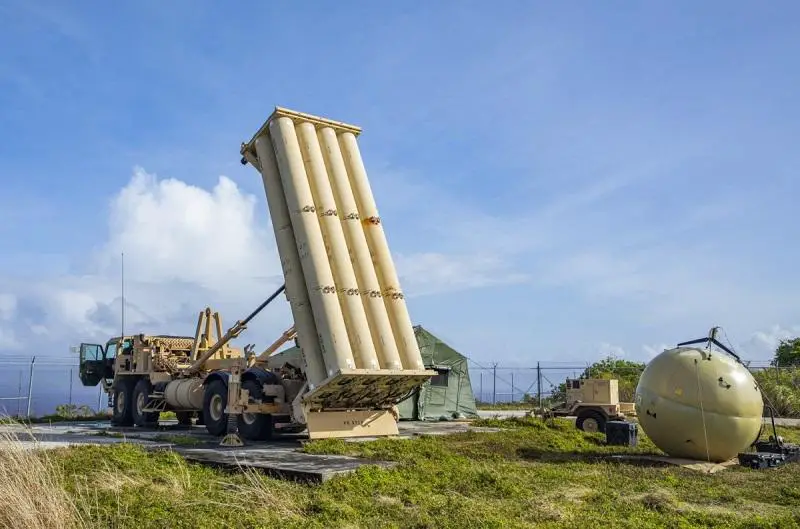In a first-ever operation, the air defenders of the E-3 Air Defense Battery used the newly developed Terminal High-Altitude Area Defense, or THAAD, remote launch capability to expand their ability to defend the Commonwealth of the Northern Mariana Islands. Over four days, E Battery in cooperation with Joint Region Marianas, Pacific Air Forces, multiple Air Force wings and squadrons and signaleers from the 307th Expeditionary Signal Battalion-Enhanced from Hawaii all contributed to deploying a THAAD launcher from Guam to Rota, CNMI. THAAD is the Army’s air defense system that specializes in intercepting ballistic missiles. This was the first use of the THAAD remote launch capability outside of testing and proved to be an outstanding addition to THAAD’s already combat-proven effectiveness. While this movement to Rota was only temporary, proving that the remote launch kit is a valuable asset to the THAAD system was vital. The air defense battery also wanted to show a sign of strength and defense for all those living on the island chain.

“The exercise was to demonstrate a new capability we received January — the remote launch kit. We worked with the leadership of Guam and CNMI to find a suitable location on Rota, brought a launcher and wanted to send a message that we can defend the entirety of CNMI. We took the best minds that we had here, created a plan, and were able to validate our capabilities on Guam with a temporary jump site. Once we did that, there was nothing to prevent us from doing it on the island of Rota. We took what we knew was going to work and we were the first THAAD battery in the entire world to deploy a remote launch kit outside of testing,” said 1st Lt. Peter Gonsalves, E3 executive officer.
“The things that all had to come together to make this a successful mission exemplified the idea of joint operations. Joint Region Marianas, 94th Army Air and Missile Defense Command, Pacific Air Forces, E-3 THAAD, Guam National Guard Security Forces, all came together to make this one of the most successful air defense missions in the area of responsibility,” said Maj. Kyle Hermanson, Task Force Talon Officer in Charge.

However, there were challenges to overcome during the operation as well. Due to competing airlift requirements the original plan for airlift fell through, but by leveraging relationships the 94th AAMDC planners were able to shift on the fly. The 535th Air Lift Squadron and the 735th Air Mobility Squadron from Joint Base Pearl Harbor-Hickam, and the 732nd Air Mobility Squadron from Joint Base Elmendorf-Richardson, Alaska, came through to ensure the mission could be accomplished. As the primary handlers of cargo and passengers in the Indo-Pacific, the 515th AMOW is committed to enabling power projection for joint partners. Talon Lightning, integrated with Nodal Lightning exercise, was an excellent opportunity for multi-capable Airmen to enhance their skills, conduct integrated mobility operations and ensure nodal capacity is never the limiting factor. The 715th Air Mobility Operations Group provided additional support. For this exercise 715th Air Mobility Operations Group deployed three teams of 12 members. The teams are comprised of aircraft maintenance specialists, air transportation specialists, a cyberspace support specialist and a logistical readiness officer.

Once on the ground in Rota, the team immediately went to work setting their site, positioning the launcher and orchestrating communication requirements. The role of ensuring there was communication from the THAAD launcher on Rota back to the Tactical Fire Control Center at Guam was the responsibility of a team assigned to the 307th ESB-E from Hawaii. They provided the installation and operation of the Army’s newest tactical communication asset — the Transportable Tactical Command Communications system that would allow the launcher to connect with the home station TFCC radar. Expectations for the exercise were high, but with the capabilities of the entire team they were met. The THAADs newest piece of equipment, the remote launch Kit, proved its worth. The future perspective of what THAAD is capable of is still to be seen. For now, the ability to expand and better protect the chain of Marianas islands is what E-3 is focused on. With the validation of the new capabilities U.S. army have the ability to dynamically project forces across the area of responsibility and allow freedom of movement in the Indo-Pacific region.
















